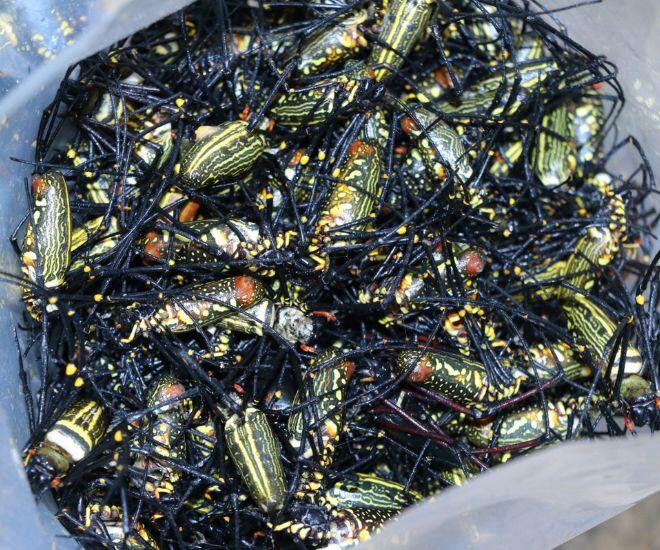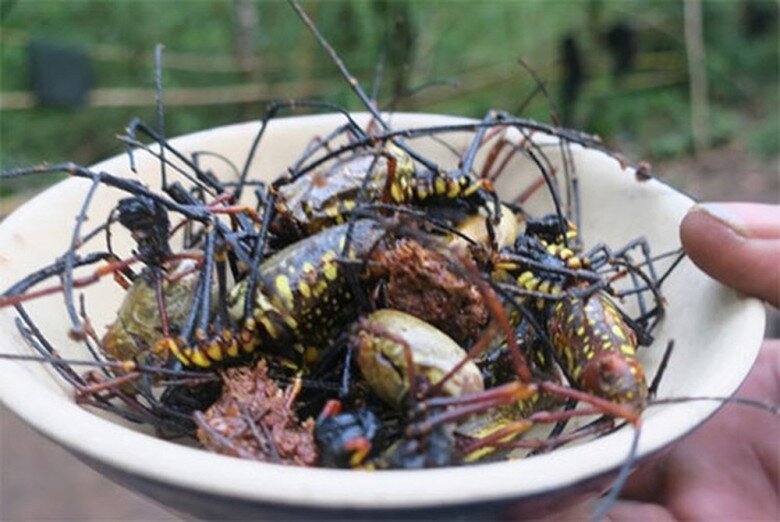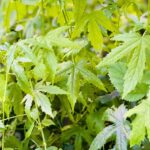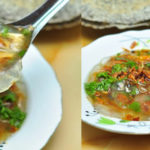
In the culinary culture of Nghe An, consuming insects as food is not a foreign concept. Apart from dishes made from golden ants, crickets, or scorpions, the black and yellow spider, scientifically known as Nephila pilipes, stands out. This species of spider is prevalent throughout Southeast Asia, with Vietnam, specifically Nghe An and Binh Thuan, being one of the places where they are most abundant.
According to local residents, the black and yellow spider used to be a “lifesaving” food source during arduous journeys into the forest when food supplies ran low. For them, this dish holds a special significance, evoking memories of challenging times and a connection to the wild nature. Back then, the spiders were prepared simply by grilling over hot coals. Later, as living conditions improved, people started to experiment with more intricate cooking methods, incorporating various spices such as salt or fish sauce to enhance the flavor.
However, in recent years, due to its unique flavor and the influence of culinary tourism, the black and yellow spider has transformed from a rustic and mysterious dish to a sought-after delicacy. Mature spiders, as big as a thumb, are sold in rural markets, and through travelers and traders, they have also reached the palates of discerning diners in urban areas.

The black and yellow spider boasts a distinctive and easily recognizable appearance. They have a glossy black body, adorned with vibrant yellow stripes on their back and yellow spots on their abdomen. Another unique feature is that, unlike most of their eight-legged cousins, this species of spider only has six legs, making their shape even more intriguing. Female spiders tend to be larger and have more pronounced colors than their male counterparts.
The spider hunting season typically spans from May to August, as the heavy rains provide ideal conditions for their growth. After the rain, spiders spin dense webs at a moderate height within the bushes. Owing to their gentle temperament and slow movement, capturing them is relatively easy. Locals simply use a bamboo stick to gently nudge the spiders, causing them to fall. On lucky days, one person can collect several kilograms of spiders, resulting in a significant income during the rainy season.
The price of these spiders ranges from 100,000 to 250,000 VND per kilogram, depending on their size and quality. This source of income has substantially improved the livelihoods of many highland residents, transforming a wild insect into a valuable commodity.

Despite their intimidating appearance, the flavor of the black and yellow spider is impressive. When cooked, the spider meat becomes buttery, rich, and aromatic. Some compare its taste to that of crab roe, but with a more intense and distinct flavor of the mountains and forests, leaving a lasting impression on those who have sampled it.
However, behind the allure of this unique dish lie some risks that cannot be overlooked. Although the black and yellow spider is not venomous, its bite can still cause swelling and pain that may persist for several days. Hunting spiders in the deep forest, with its treacherous terrain and obstacles, also entails inherent dangers.
Moreover, experts have issued important warnings regarding the exploitation and consumption of this spider species. It is advised that people refrain from collecting wild spiders for food, as they play a crucial role in the ecosystem by controlling pest populations. Overexploitation can disrupt the ecological balance.
Additionally, medical professionals caution about potential health risks. There are numerous insect species in nature that possess hidden toxins, and consuming them without proper testing can be dangerous. Individuals with insect allergies, in particular, should exercise extreme caution when indulging in this delicacy to avoid adverse reactions such as allergies or poisoning.
While the black and yellow spider is evolving into a lucrative delicacy, its story also presents a challenge: finding a balance between economic development and environmental protection, between exploring unique cuisines and ensuring community health and safety.
Delicacies of Nghe An: Top 15 Treats to Try and Buy as Gifts
“When it comes to unique and mouth-watering delicacies, Nghe An province in Vietnam boasts an impressive array of specialties. From delectable dishes to savory treats, this region offers a culinary journey like no other. With a plethora of options to tantalize your taste buds, you’re in for a treat as we uncover the top 15 must-try specialties of Nghe An. Get ready to indulge and explore the flavors that will leave you craving more!”
































